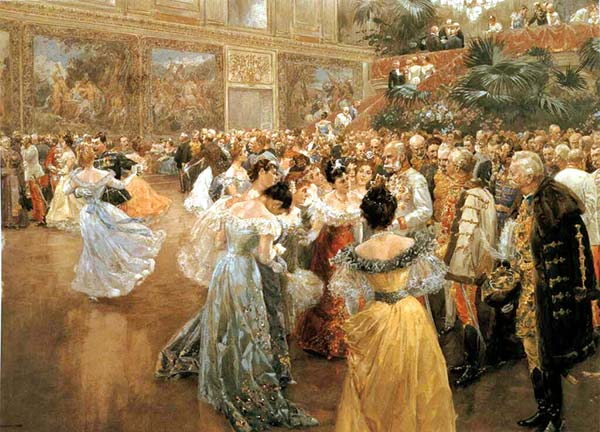Kontradans: Haitian Contra Dancing
In the 1700s, while the French were occupying and controlling Haiti before the Haitian Revolution, they were not idly counting their days. During those times, many Frenchmen enjoyed “contra dancing,” (or, in French, contredanses), the English-born country dances that had been adopted long before. The name is originally derived from a simple bastardization of “country dancing.”

After the Haitian Revolution, the Affranchis adopted and applied a Creole twist to contra dancing. As if enough linguistic damage had not already been done to the word, the historic Mulattos took contredans and made it into “kontradans.” Similar to the Affranchi dance that had also become quite popular at the time, kontradans was public entertainment and group recreation for the privileged in Haiti’s post-Revolution society.
In contredans, participants generally line up across from a partner, traditionally one man and one woman. Two of these lines are formed; together, they are called a set. Dancers mirror one another’s movements, and trade partners as the song progresses. Much of the fun in contra dancing comes from the fluid swapping of partners from one individual to another. A single dance generally lasts about ten minutes. During this time, one dancer meets and jigs with between fifteen to twenty new friends. The goal is to time the transitions well enough that one can end up with their original counterpart by the end of the set.
Haitian Contra Dancing Today
Eventually, kontradans spread throughout the neighboring Caribbean islands and to the French-Mulatto colonists of Louisiana in America. The music form uses pounding drums, lyrics versed from either old or new poetry, and a poised dance form that imitates the colonial practitioners of old. Though not actually so prim, this proper style is often seen as contrary to the wild and more free form response, meringue dance. Modern contra dancing is enjoyed all over the world as a streamlined form of professional dance; to find the authentic Haitian version, though, one will have to visit the Creole community in either New Orleans, Louisiana, or in the communities throughout Haiti itself.
It is not easy to find recorded Haitian kontradans music, as practitioners of the genre are often consciously protesting the more-modern and popular genres of Haitian music by their very playing of the songs. One might come across a kontradans musician on the street willingly ready to denounce Haitian hip hop, for example. The music had left the mainstream long before the readily available use of recording instruments.

Just like the polka in Europe, there are now many modified forms of dancing that have developed from the original Harvest and Wedding celebrations; since there were so many people having eaten and/or drunk enough, choose to take advantage of the lowered social inhibitions, and not only meet other people in the same condition, but work off their calories but enjoy socializing through the dance movements. Merengue is derived not only from having one’s foot chained to another person’s foot, but also the influence of the upper class ritualized dances and social events.